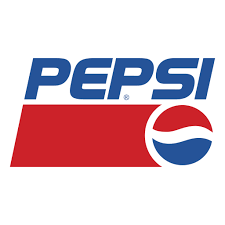

porkbun.com tells you the renewal cost. the cheapest is a series of at least 6 numbers with the .xyz domain.
revolutionary rodent


porkbun.com tells you the renewal cost. the cheapest is a series of at least 6 numbers with the .xyz domain.


I don’t think anyone should feel the need to quantify their actions into a specific gender.


If we weren’t relevant, you wouldn’t have even posted this.


That article is paywalled, and I don’t like paywalls so here is the article:
There are still no good answers about America’s favorite cookware.
By Yasmin Tayag An illustration of a nonstick pan with a skull and bones in it Getty; The Atlantic FEBRUARY 6, 2023 SHARE I grew up in a nonstick-pan home. No matter what was on the menu, my dad would reach for the Teflon-coated pan first: nonstick for stir-fried vegetables, for reheating takeout, for the sunny-side-up eggs, garlic fried rice, and crisped Spam slices that constituted breakfast. Nowadays, I’m a much fussier cook: A stainless-steel pan is my kitchen workhorse. Still, when I’m looking to make something delicate, such as a golden pancake or a classic omelet, I can’t help but turn back to that time-tested fave.
And what a dream it is to use. Nonstick surfaces are so frictionless that fragile crepes and scallops practically lift themselves off the pan; cleaning up sticky foods, such as oozing grilled-cheese sandwiches, becomes no more strenuous than rinsing a plate. No wonder 70 percent of skillets sold in the U.S. are nonstick. Who can afford to mangle a dainty snapper fillet or spend time scrubbing away crisped rice?
All of this convenience, however, comes with a cost: the unsettling feeling that cooking with a nonstick pan is somehow bad for you. My dad had a rule that we could use only a soft, silicon-edged spatula with the pan, born of his hazy intuition that any scratches on the coating would cause it to leach into our food and make us sick. Many home cooks have lived with these fears since at least the early 2000s, when we first began to hear about problems with Teflon, the substance that makes pans nonstick. Teflon is produced from chemicals that are part of an enormous family of chemicals known as perfluoroalkyl and polyfluoroakyl substances, or PFAS, and research has linked exposure to them to many health conditions, including certain cancers, reproductive issues, and high cholesterol. And that is about all we know: In kitchens over the past two decades, the same questions around safety have lingered unanswered amid the aromas of sizzling foods and, perhaps, invisible clouds of Teflon fumes.
It is objectively ridiculous that the safety of one of the most common household items in America remains such a mystery. But the reality is that it is nearly impossible to measure the risks of PFAS from nonstick cookware—and more important, it’s probably pointless to try. That’s because PFAS have for many decades imparted a valuable stain- and water-resistance to many types of surfaces, including carpets, car seats, and raincoats.
At this point, the chemicals are also ubiquitous in the environment, particularly in the water supply. Last June, the Environmental Protection Agency established new safety guidelines for the level of certain PFAS in drinking water; a study published around the same time showed that millions of deaths are correlated with PFAS exposure. By the Environmental Working Group’s latest count, PFAS have contaminated more than 2,850 sites in 50 states and two territories—an “alarming” level of pervasiveness, researchers wrote in a National Academies of Sciences, Engineering, and Medicine report last year. But something about nonstick pans has generated the biggest freak-out. This is not surprising, given their exposure to food and open flames. After all, people do not heat up and consume raincoats (as far as I know).
Since research into their health effects began, certain types of PFAS have been flagged as more dangerous than others. Two of them, PFOA and PFOS, were voluntarily phased out by manufacturers for several reasons, including the fact that they were deemed dangerous to the immune system; now many nonstick pans specify that their coatings are PFOA free. (If you’re confused by all the acronyms, you aren’t the only one.) But other types of PFAS are still used in these coatings, and their risks to humans aren’t clear. Teflon claims that any flakes of nonstick coating you might ingest are inert, but public studies backing up that claim are difficult to find.
In the absence of relevant data, everyone seems to have a different take on nonstick pans. The FDA, for example, allows PFAS to be used in nonstick cookware, but the EPA says that exposure to them can lead to adverse health effects, and last year proposed labeling certain members of the group as “hazardous substances.” According to the CDC, the health effects of low exposure to these chemicals are “uncertain.” Food experts are similarly undecided on nonstick pans: A writer for the culinary site Serious Eats said he “wouldn’t assume they’re totally safe,” whereas a Wirecutter review said they “seem to be safe”—if used correctly.
That’s about the firmest answer you’re going to get regarding the safety of nonstick cookware. “In no study has it been shown that people who use nonstick pans have higher levels” of PFAS, says Jane Hoppin, a North Carolina State University epidemiologist and a member of a National Academies of Sciences, Engineering, and Medicine committee studying PFAS. But she also told me that, with regard to the broader research on PFAS-related health risks, “I haven’t seen anybody say it’s safe to use.”
Certainly, more research could be done on PFAS, given the lack of relevant studies. There is no research, for example, showing that people who use nonstick pans are more likely to get sick. The one study on exposure from nonstick pans mentioned in the report that Hoppin and others published last year found inconclusive results after measuring gaseous PFAS released from heated nonstick pans, though the researchers tested only a few pans. Another study in which scientists used nonstick pans to cook beef and pork—and an assortment of more glamorous meats including chicken nuggets—and then measured the PFAS levels likewise failed to reach a conclusion, because too few meat samples were used.
More scientists could probably be convinced to pursue rigorous research in this field if PFAS exposure came only from nonstick pans. Investigating the risks would be tough, perhaps impossible: Designing a rigorous study to test the risks of PFAS exposure would likely involve forcing unwitting test subjects to breathe in PFAS fumes or eat from flaking pans. But given that we are exposed to PFAS in so many other ways—drinking water being chief among them—what would be the point? “They’re in dental floss, and they’re in your Gore-Tex jacket, and they’re in your shoes,” Hoppin said. “The relative contribution of any one of those things is minor.”
As long as PFAS keep proliferating in the environment, we might never fully know exactly what nonstick pans are doing to us. The best we can do for now is decide what level of risk we’re willing to accept in exchange for a slippery pan, based on the information available. And that information is frustratingly vague: Most nonstick products come with a disclosure of the types of PFAS they contain and the types they do not. Sometimes they also include instructions to avoid high heat, especially above 500 degrees Fahrenheit. Hoppin recommends throwing nonstick pans away once they start flaking; in general, it seems worth it to use the pans only when essential. There is likewise a dearth of guidance on breathing in the fumes from an overheated pan, though breathing in PFAS fumes in industrial settings has been known to cause flulike symptoms. If you’re concerned, Hoppin said, you could use any of the growing number of nonstick alternatives, including ceramic and carbon-steel cookware. (Her preference is well-seasoned cast iron.)
Still, perhaps it’s time to accept that exposure to PFAS is inevitable, much like exposure to microplastics and other carcinogens. At this point, so many harmful substances are all around us that there doesn’t seem to be any point in trying to limit them in individual products, though such efforts are under way for raincoats and period underwear. “What we really need to do is remove these chemicals from production,” Hoppin said. The hope is that doing so would broadly reduce our exposure to PFAS, and there’s evidence that it would work: After PFOS was phased out in the early 2000s, its levels in human blood declined significantly. But until PFAS are more tightly regulated, we’ll continue our endless slide through nonstick limbo, with our grasp of the cookware’s safety remaining slippery at best.
I’ve tried to cut down on my nonstick-pan use for sheer peace of mind. Many professional chefs reject nonstick pans as unnecessary if you know the proper technique; French chefs, after all, were flipping omelets long before the first Teflon pan was invented—by a French engineer—in 1954. Fancying myself a purist, I recently attempted to cook an omelet using All-Clad stainless steel, following a set of demanding instructions involving ungodly amounts of butter and a moderate amount of heat. Unlike my resolve to avoid nonstick pans, the eggs stuck.


A good start is to go to distrowatch and look at the popular distros. Anything in the top 15 should work great. For beginners I would pick among MX Linux, EndeavourOS, Fedora, OpenSUSE, or Ubuntu/an Ubuntu-based distro like Linux Mint or Pop!_OS. You can click on their name and read a bit about them and download the ISO either from the “home page” link under the description, or by scrolling down to the release announcements and clicking there.
I highly recommend Ventoy. You can download that, plug in a removable storage device, then run Ventoy2Disk. It will guide you through installing it to the removable storage, and once you do all you need to do is drag the .iso files onto the drive. You can put as many iso files as you like and Ventoy will let you choose which one you want to use when you reboot. All of the ones I mentioned above have a “live” environment meaning that you can try them out freely without doing anything permanent. MX Linux even gives you the option of saving the changes you make in the live environment so you can install software that will be there the next time you boot into the live environment.
For the reason above if you’re lost on where to start, grab an iso of MX-21.3_x64 if your hardware is older or MX-21.3_x64 “ahs” if it’s newer from their website, slap the iso on the device with Ventoy, reboot, press F11 or whatever at your BIOS splash screen to change the boot device to the one with the iso, then just follow the instructions to boot into MX and go to town.
Feel free to let me know if you have any other questions or need more help.


I would like to, but I’m not physically or mentally capable of it. It also costs a lot of money.


Pretty bogus move by npm and a sad story for the dev to have felt betrayed by people whom he trusted, and felt forced to burn so many bridges. It is a decent point in favor of being careful which communities you invest in.
A point of clarification, yarn is not owned by Facebook; it was created in part by Facebook but is actually licensed under BSD-2 and copyright attributed to “Yarn Contributors.”
I think the important thing here is probably to have access to a community managed package registry. It appears in 2019 someone started working on one at open-registry.dev but looking at the github page it seems abandoned.
Tips for good numbers: dates work pretty well. Another thing you can do is use a simple cipher The simplest one is the one on old touch-tone phones. Then just memorize a word and convert it e.g. F-L-A-S-H-Y = 352749.
Or just use a password manager like bitwarden and keep it in there.